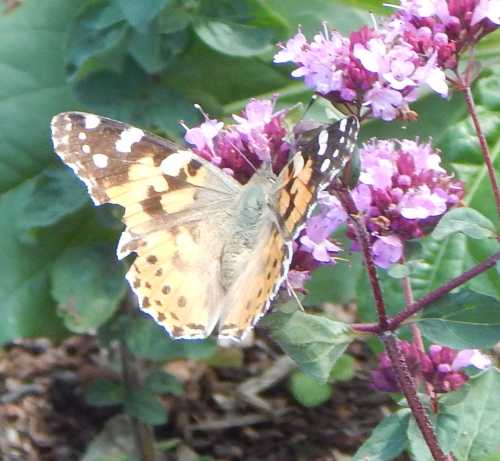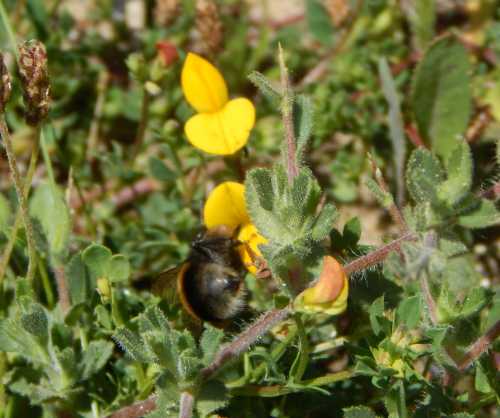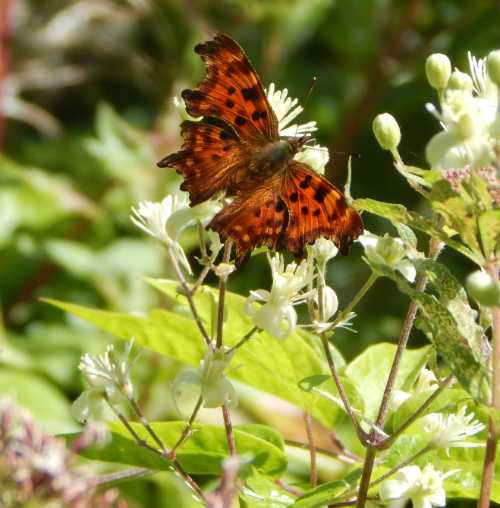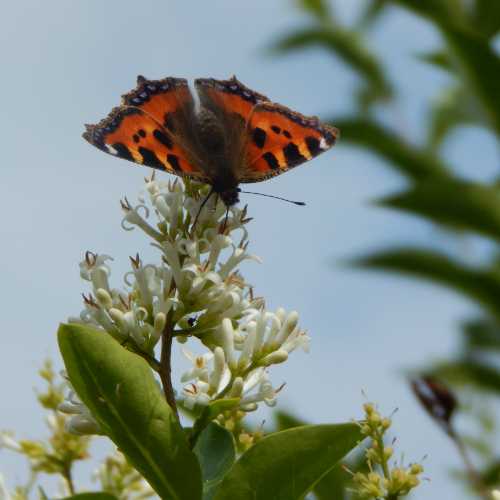Are Neonicotinoids Killing Wild Bees and Butterflies
More studies have been released highlighting how neonicotinoids affect bee populations as well as butterflies.
For years now, the agrochemical companies responsible for manufacturing neonicotinoids, have defended their products, in the face of substantial independent field and laboratory research highlighting the dangers of these widely used pesticides, to bees and other pollinators.
The World Wide Integrated Assessment of the Impact of Systemic Pesticides on Biodiversity and Ecosystems has made a synthesis of 1,121 published peer-reviewed studies , and the EFSA recommended restrictions to the use of some of these chemicals.

New
Study: Impacts of neonicotinoid use on long-term population changes in wild
bees in England
Ben A. Woodcock, Nicholas J. B. Isaac, James M. Bullock, David B. Roy, David G. Garthwaite, Andrew Crowe & Richard F. Pywell
Published: Nature Communications 7, Article number: 12459 (2016),doi:10.1038/ncomms12459

Some worrying findings quoted from the paper:
- “We relate 18 years of UK national wild bee distribution
data for 62 species to amounts of neonicotinoid use in oilseed rape. Using a
multi-species dynamic Bayesian occupancy analysis, we find evidence of increased
population extinction rates in response to neonicotinoid seed treatment use on
oilseed rape”.
Note: this is despite attempts to assist pollinators with increased pollinator margins:
“plant species richness on arable and horticulture land increased by 30% between 2000 and 2007, partly due to an increase in sown wildflower field margins which are used by wild bees. Arable land therefore improved rather than declined in its quality for many wild bees over the period we study.”
The research was published in Nature, and you can find the full study by copying and pasting the following into your browser:
http://www.nature.com/ncomms/2016/160816/
ncomms12459/full/ncomms12459.html
What about butterflies?
Some years ago I highlighted the fact that some patents for products containing neonicotinoids indicate that the product can be used to “control” non-target insects such as Lepidoptera (i.e. butterfly and moth) species.
To my mind it seems obvious therefore, that
such data within patents should be taken into account when assessing applications
to register them.......
........whilst also taking account of the fact that manufacturers may be reluctant to mention on a patent whether a product is lethal to bees (because a product posing “unacceptable risk” to bees cannot legally be approved), whereas it is safe for pesticide manufacturers to admit killing a close relative – i.e. Vespa (wasp) species without risk of their application to register the pesticide being overturned.
Two recent papers outline the effects of neonicotinoids
on butterflies, and it’s not good news – hardly a surprise! See previous article about UK butterfly decline.

Are neonicotinoid insecticides driving declines of widespread butterflies?
Andre S. Gilburn, Nils Bunnefeld, John McVean Wilson, Marc S. Botham, Tom M. Brereton, Richard Fox, Dave Goulson
Published November 24, 2015; PubMed 26623186
In the UK, in a joint study completed by Sussex and Stirling Universities, researchers found population trends of 15 species showed declines associated with neonicotinoid use, including Small Tortoiseshell, Small Skipper and Wall species. The study is based on data gathered from more than 1000 sites across the UK as part of the long-running UK Butterfly Monitoring Scheme.
You can read more about it here: https://peerj.com/articles/1402/

Increasing neonicotinoid use and the declining butterfly fauna of lowland California
Matthew L. Forister, Bruce Cousens, Joshua G. Harrison, Kayce Anderson, James H. Thorne, Dave Waetjen, Chris C. Nice, Matthew De Parsia, Michelle L. Hladik, Robert Meese, Heidi van Vliet, Arthur M. Shapiro
Published 16 August 2016.DOI: 10.1098/rsbl.2016.0475
Some key points copied from the study:
- A negative association between butterfly populations and increasing neonicotinoid application is detectable while controlling for land use and other factors, and appears to be more severe for smaller-bodied species. These results suggest that neonicotinoids could influence non-target insect populations occurring in proximity to application locations.
- “Notably, neither land conversion, nor shifting temperatures show evidence of increased rate of change concomitant with the butterfly declines beginning in the late 1990s. However, neonicotinoid use in the region began to increase dramatically at that time. Here, we analyze neonicotinoid application records in relation to both the total number of butterfly species observed per year, and in relation to occupancy records for individual species, while controlling for land use and climatic effects”.
- A dramatic decline in the numbers of butterfly species
observed annually is evident, starting in the late 1990s: the breakpoint
estimated by spline inflection was 1997 . Neonicotinoid use began in the region in 1995
and has been increasing dramatically in comparison with other insecticides
- A relationship between neonicotinoid application and the number of butterfly species was also successfully modelled (– i.e. the model showed a relationship between neonicotinoid use and butterfly decline).
You can read more by copying this link into your browser: http://rsbl.royalsocietypublishing.org/content/12/8/20160475
Further article: "Vanishing Act: Why Insects Are Declining and Why It Matters "
- "The decline is dramatic and depressing and it affects all kinds of insects, including butterflies, wild bees, and hoverflies,” - says Martin Sorg, an entomologist from the Krefeld Entomological Association involved in running the monitoring project.
- "Our study reveals, through one detailed example, that even official protection status can't really prevent dramatic species loss,” - says Thomas Schmitt, director of the Senckenberg Entomological Institute.
- Jürgen Deckert, insect custodian at the Berlin Natural History Museum, says he is worried that "the decline in insect populations is gradual and that there's a risk we will only really take notice once it is too late."
Read the article by copying and pasting this link into your browser:
http://e360.yale.edu/content/feature.msp?id=3012